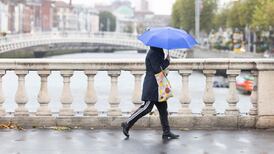For the past 50 years Tiananmen Square has been the nearest thing the Chinese Communist Party has had to holy ground. It is the plaza that Mao built, famed for its rallies during the Cultural Revolution, and it became notorious after the bloody crackdown on student protesters in 1989.
But in a sign of widening intellectual debate in China, one of the country's leading young architects has proposed a radical transformation of the square.
Ma Yansong, an award-winning urban planner, says the grey concrete symbol of China's red politics should be given a green makeover. To heighten awareness about the environment, he believes the Beijing square should be transformed into a park and forest.
In his model, the vast expanse of paving slabs outside the Forbidden City are replaced by trees and grass. There are lush thickets around the mausoleum containing Mao Zedong's embalmed body and a verdant entrance to the Great Hall of the People.
"We want to transform this empty political square into something that can be enjoyed," Mr Ma said. "Our aim is to propose not to criticise, to raise the issue of public space. The way we do our architecture is to show that we can come up with our own solutions."
Mr Ma is one of the boldest and least orthodox within China's architectural community. His firm, MAD, has offices in Beijing and Dubai, is working on five big projects in China, and is behind a curvaceous 50-storey tower arising in Ontario, Canada.
Mr Ma believes Tiananmen Square need not be considered sacrosanct, because its origins are relatively recent and foreign. The plaza was created after Mao Zedong's communists came to power in 1949. Copying Red Square in Moscow, it was designed for military parades and giant public rallies. But this function is, he says, outdated.
"Tiananmen is . . . the physical centre but not the real centre. No Beijing people go there," he said. "The question we posed ourselves was how to make the area more enjoyable if we no longer need it for tanks?"
However, his plan for Tiananmen is too controversial for the authorities. The mainland media have already been told not to publish images of his green model.
"Tiananmen Square is a sensitive topic because many things happened there," Mr Ma said. "The idea of turning the plaza into a forest makes many people feel uncomfortable."
Zhang Lixin, a director at the Beijing urban planning bureau, said: "This isn't just an architectural design problem. We also use this space for national events. In the long term, I think Tiananmen Square will keep its original function. We can do some work nearby
to make more green spaces."
Dramatic changes are occurring in Beijing's urban landscape as the city gears up to host the 2008 Olympics, yet the city's sprawling suburbs continue to eat up remaining farmland.
Mr Ma argues that a green Tiananmen could indicate changing priorities. "I read that Beijing has 2.8 per cent of green space, including the lakes. It was much better in the past. It is very bad now."
- ( Guardianservice)








